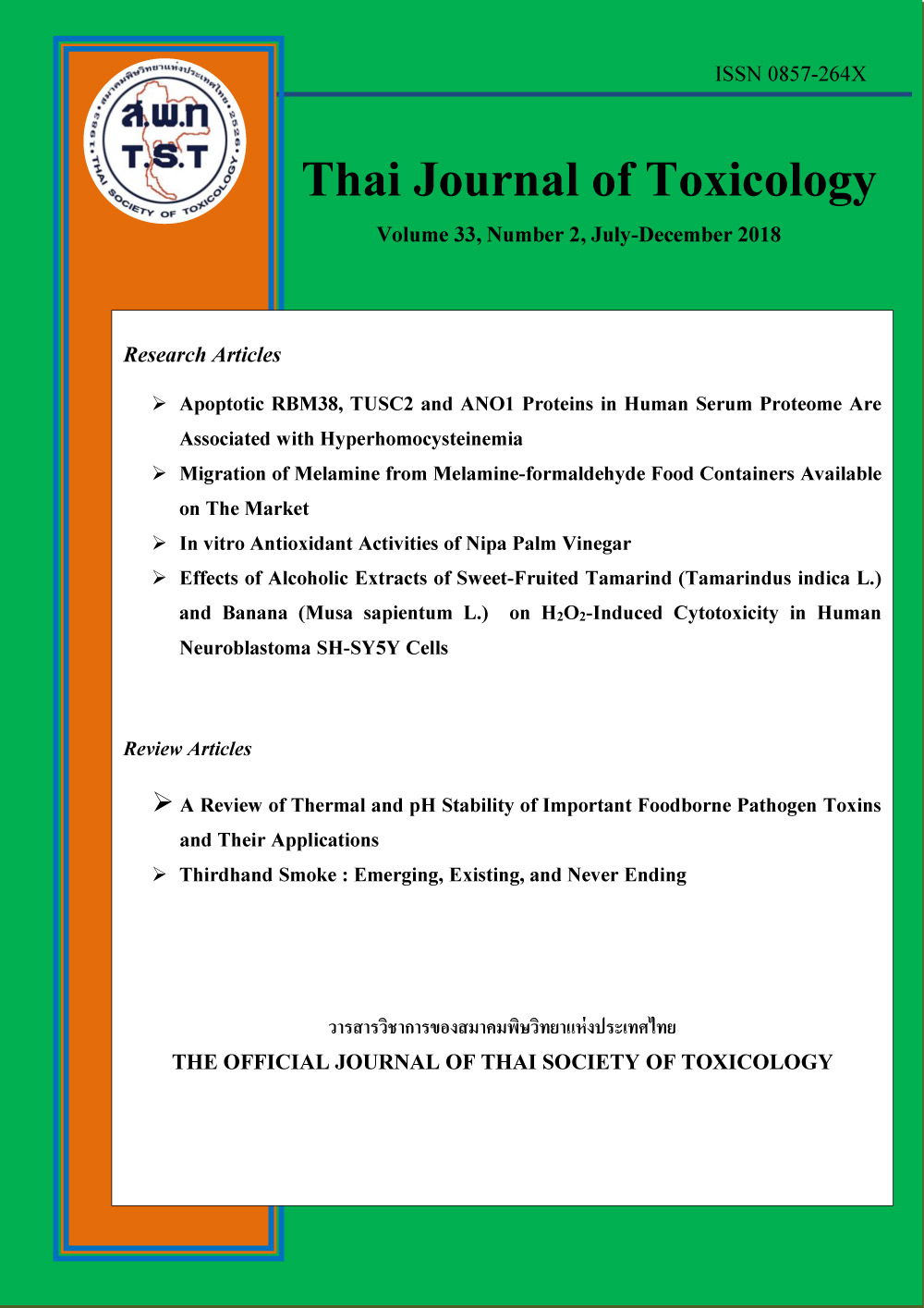Effects of Alcoholic Extracts of Sweet-Fruited Tamarind (Tamarindus indica L.) and Banana (Musa sapientum L.) on H2O2-Induced Cytotoxicity in Human Neuroblastoma SH-SY5Y Cells
Main Article Content
Abstract
Oxidative stress-induced cell damage has been linked to the pathogenesis of neurodegenerative diseases. Dietary antioxidants are now gaining increased attention in research for the neurodegenerative management. A previous study on antioxidants content and antioxidant activity in twenty-one varieties of fresh fruits commonly consumed in Thailand showed that sweet tamarind had the highest levels of total polyphenol and antioxidant activity (ORAC assay). Banana (Kluai Khai) showed the high content of ferulic acid, and carotenoids. The present study aimed to investigate the effects of sweet tamarind and Kluai Khai extracts, and their commercially bioactive compound fisetin and ferulic acid, on hydrogen peroxide (H2O2)-induced cytotoxicity in human neuroblastoma SH-SY5Y cells. Low level of H2O2 did not affect intracellular ROS production and cell viability. Sweet tamarind and Kluai Khai extracts enhanced ROS generation in cells whereas fisetin and ferulic acid markedly reduced ROS levels. However, both the fruit extracts and bioactive compounds did not significantly affect cell viability related to H2O2 treatment alone. High concentration of H2O2 significantly increased intracellular ROS levels and induced cell death. Sweet tamarind and Kluai Khai extracts showed lower effectiveness in reduction of ROS levels but similar capacity in increasing cell survival compared with those of related bioactive compounds. These results suggest that phytochemicals in fruit extracts play a role in suppression of cell death by possessing antioxidative activities. However, non-antioxidant functions of phytochemicals cannot be excluded from the possible mechanisms of cell survival.


